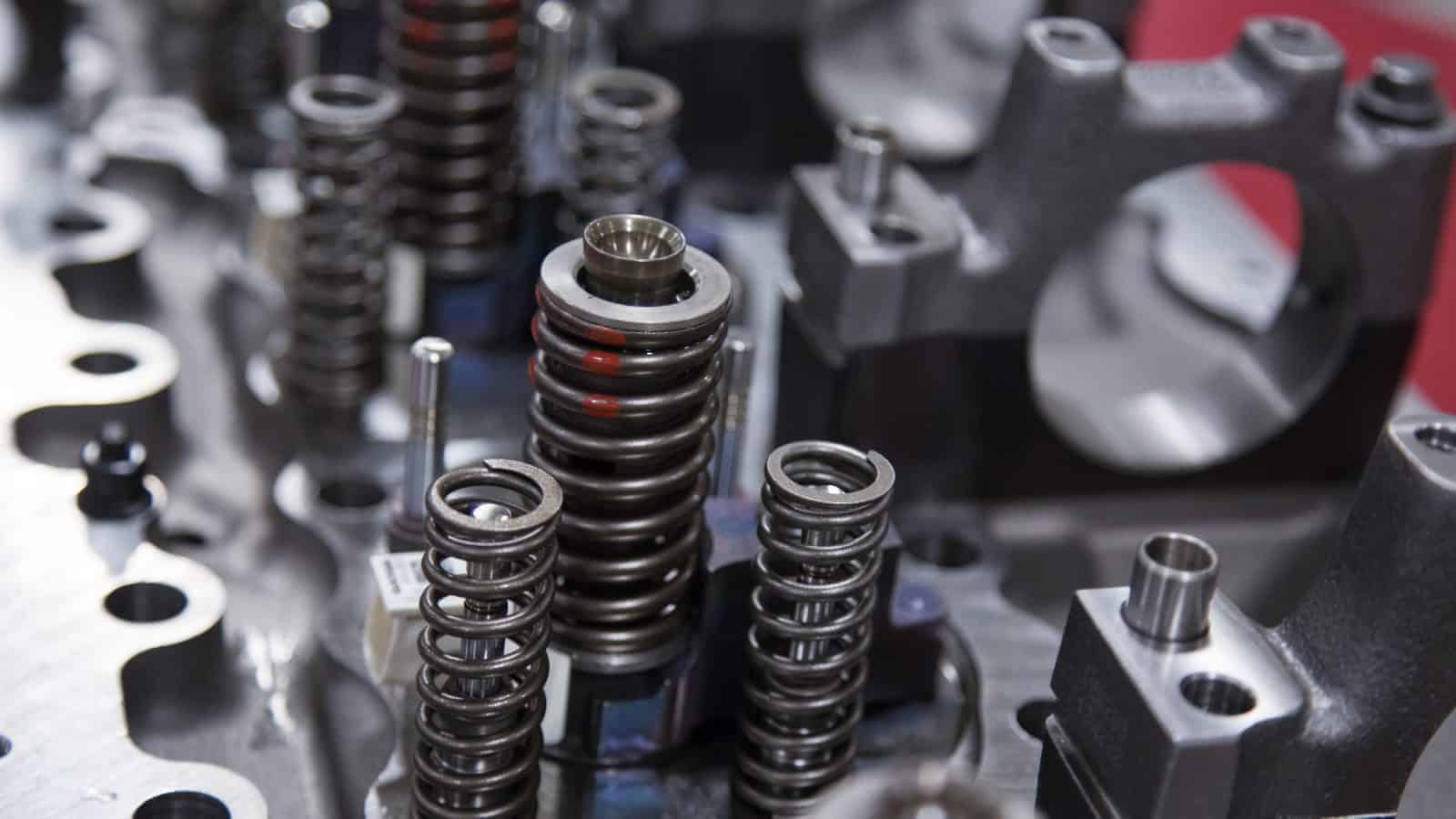A Footwear Company Strives for Circularity
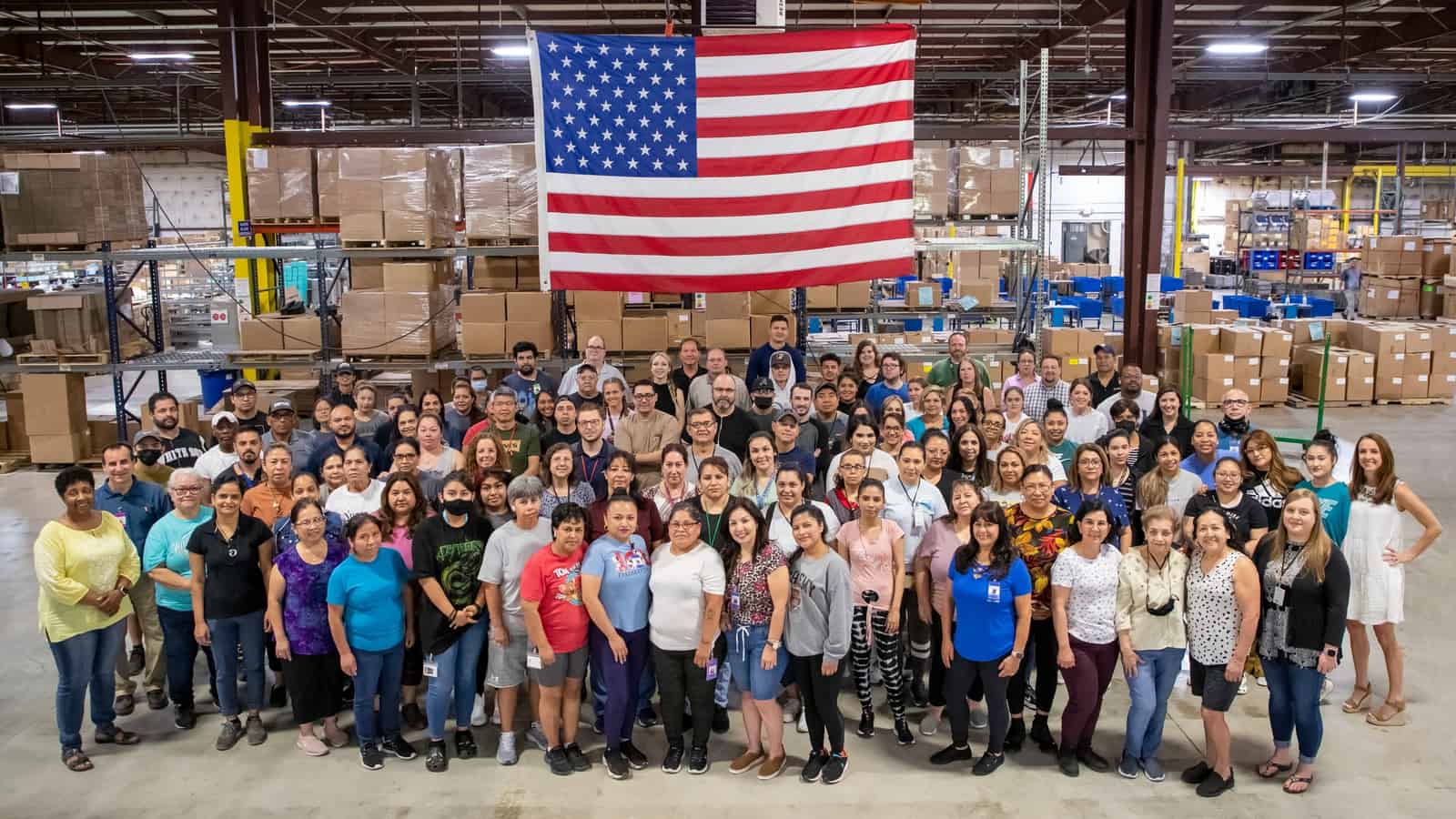
Within the footwear business, Okabashi is unique. The company, based in Buford, Georgia, is not only a family-owned company focused on sustainability, but also, according to the company’s leadership, producing part of the 1% of footwear still made in the United States.
For third-generation shoemaker Sara Irvani, this choice to build a sustainable and successful business in the U.S. was made possible only thanks to constant research and development.
The backstory: Irvani’s family started the company 40 years ago, and it always tried to reduce waste, both for the positive environmental impact as well as to improve its bottom line.
- “By developing closed-loop manufacturing processes, we were able to reuse some of the materials that otherwise might have gone to waste,” said Irvani. “That helped us stay more competitive—and from there we’ve developed innovations in processes and systems and materials that build on that foundation.”
The process: Okabashi’s sustainable processes extend throughout the product lifecycle—from incorporating recycled or biological elements (like soy) that ensure products last longer to preventing disposable waste to recycling post-consumer shoes into new ones.
- “When we look at sustainability of a product, we do it holistically—we look at what it’s made of, where it’s made, how it’s made, the lifecycle, the quality—and we’ve been able to innovate and develop so that our manufacturing process doesn’t create waste,” said Irvani.
- “Without R&D, we would not only be creating the additional cost basis of throwing away all those scraps, but we would also not be able to eliminate waste that is by default landfill or ocean bound.”
The circular economy: In the traditional, linear economic model, inputs go into production, a product reaches a consumer, the consumer uses the product and eventually throws it away. In contrast, Okabashi is working to perfect a circular economic model for its products, said Irvani.
- “If you are designing for circularity, you might use renewable and recycled resources, develop them into that same product with a level of quality that lasts longer, and when the customer is ready to move on, it can be remade into something else,” said Irvani. “That’s how the loop continues. When we talk about circularity, we’re creating that virtuous cycle.”
The homegrown production: Okabashi’s R&D efforts both help it stay in the United States by keeping costs down and require domestic production to work.
- “To remake and recycle a product into something new, you need to have local production,” said Irvani. “You can’t be sending things halfway across the world to be unmade and remade and sent back. That’s why R&D locally and domestically is so important, to help produce circular systems.”
The local benefit: Irvani is quick to point out that money spent on R&D creates significant financial benefits for local communities.
- “There’s a multiplier effect for commercially oriented R&D in terms of the jobs it can create and the impact on the local economy,” said Irvani. “You get a very strong return on investment for both the company and for the community.”
The global perspective: R&D is essential for U.S. companies competing with manufacturers abroad, Irvani added.
- “For U.S. manufacturing broadly, R&D is critical to stay at the forefront of the innovation curve,” said Irvani. “Unless we’re proactively investing and developing new and better ways of doing things, we won’t be globally competitive.”
The last word: “It is imperative industry and retail move toward a circular-based economy,” said Irvani. “That’s not something that just happens or falls from the sky. Consumers are demanding it, and R&D is our pathway to that future.”
North American Manufacturing Associations Reaffirm Manufacturing Agenda of the Future
Washington, D.C. – Today, the National Association of Manufacturers, the Confederation of Industrial Chambers of Mexico and the Canadian Manufacturers & Exporters hosted the inaugural North American Manufacturing Conference at NAM headquarters where they formalized manufacturers’ commitment to supporting close economic ties between the United States, Canada and Mexico. NAM President and CEO Jay Timmons, CONCAMIN President José Antonio Abugaber Andonie and CME President and CEO Dennis A. Darby signed a memorandum of understanding, which will serve as a roadmap to the cooperation between the three organizations and outlines the key goals and objectives for the partnership.
“There’s never been a greater need for us to stand together. The world is caught between different political and economic systems. One system, our system here in North America, enriches lives and lifts people up into freedom and prosperity, while other systems oppress their people and rob them of their liberty,” said Timmons. “Together, we are an indomitable force for prosperity. The United States–Mexico–Canada Agreement is a powerful force multiplier for the already unmatched productive power of our industries. And this agreement reminds us of what we can achieve when we work together.”
“Today we live in a new reality. The commercial competition with China, the pandemic, the conflict in Ukraine, among others, place us before a second great industrial transformation in North America, the first one being propelled by NAFTA 30 years ago. Some call it nearshoring, friend-shoring, ally-shoring or reshoring. No matter the name, the truth is that this phenomenon is modifying the structure of international industrial organization. North America is the epicenter of this transformation,” said Abugaber Andonie.
“Manufacturers are an important driver of economic development and prosperity. We are key players in the changes and challenges of the 21st century,” said Darby. “This agreement between representatives of Canada, the United States and Mexico reinforces the strong ties between our three economies and manufacturing industries and serves as a reminder that we can achieve so much more when we work together. We would like to thank our colleagues from the NAM and CONCAMIN for this agreement, and we look forward to future cooperation.”
The MOU calls for the organizations to share information on each organization’s services and activities and to jointly develop the North American manufacturing agenda of the future. The associations will share best practices and policy recommendations to assist manufacturers in addressing future commercial challenges in North America, including, but not limited to, global competitiveness. They will work collaboratively to understand the challenges facing manufacturers in North America and commit to host the North American Manufacturing Conference on an annual basis in Mexico, Canada or the United States, on a rotating basis.
Click here to view the full text of the MOU.
About Canadian Manufacturers & Exporters
Since 1871, Canadian Manufacturers & Exporters has been helping manufacturers grow at home and compete around the world. Our focus is to ensure manufacturers are recognized as engines for growth in the economy, with Canada acknowledged as both a global leader and innovator in advanced manufacturing and a global leader in exporting. CME is a member-driven association that directly represents more than 2,500 leading companies that account for an estimated 82% of manufacturing output and 90% of Canada’s exports.
CONFEDERACIÓN DE CÁMARAS INDUSTRIALES DE LOS ESTADOS UNIDOS MEXICANOS
The Confederation of Industrial Chambers of the United Mexican States, CONCAMIN, established in 1918, is the main organization representing the different industrial sectors and activities of high importance for the economic development of Mexico.
It is an effective business representation organization, recognized by its leadership and full capacity to develop projects and initiatives through its work commissions, that contribute to achieve sustained development for the Mexican industry.
- We are an Organization committed to the economic growth of the country.
- Obligatory organ of consultation of the three orders of government in all those topics related to the industry in Mexico, according to the Law of Business Chambers and their Confederations.
- Annually, about 30% of the Gross Domestic Product that is generated in the country comes from those affiliated with the Confederation of Industrial Chambers of the United Mexican States.
In accordance with the provisions of the Law of Business Chambers and their Confederations, we are an organization of consultation and collaboration of the State; Therefore, we maintain a close, harmonious and purposeful relationship with the three levels of government and the powers of the nation.
-NAM-
The National Association of Manufacturers is the largest manufacturing association in the United States, representing small and large manufacturers in every industrial sector and in all 50 states. Manufacturing employs nearly 13 million men and women, contributes $2.91 trillion to the U.S. economy annually and accounts for 55% of private-sector research and development. The NAM is the powerful voice of the manufacturing community and the leading advocate for a policy agenda that helps manufacturers compete in the global economy and create jobs across the United States. For more information about the NAM or to follow us on Twitter and Facebook, please visit www.nam.org.
How Can Companies Boost Morale?

After a global pandemic and amid considerable economic strain, worker morale may not be everything a company hopes. So what can leaders do to boost communication and restore a sense of excitement and purpose?
The Innovation Research Interchange—the NAM’s innovation division—recently published a whitepaper on morale building, drawing on copious existing research as well as consultations with leaders in a range of industries (from aerospace to consumer goods). Here are some of its key recommendations.
Senior leaders in the trenches: The best way to understand company morale (or its absence) is to go looking for it. In one notable case, FM Global Chief Science Officer Lou Gritzo spent a day working in each company lab, so he could understand where communication and cooperation needed improvement.
- Thanks to this experiment, Gritzo was able to “open lines of communication up and down the organization,” according to the IRI, leading to both an improved flow of information and greater comfort among lab staff in making independent decisions.
- “For others looking to try their hand at being a (not so) undercover boss, [Gritzo] recommends setting out rules of the road in advance,” the IRI paper notes. “The goal is to create a dialogue, not make guarantees that things will change. The change comes from the relationships built.”
Support for midlevel managers: Many participants in the IRI’s roundtables and interviews agreed that midlevel managers have only become more crucial in recent years—which explains why these managers are often very stressed.
- Amid the pressures of the pandemic, companies began offering more support and coaching for middle managers, according to earlier IRI research.
- One organization studied by the IRI and its research partner, Babson College, brought in coaches to work with managers—but not just for one-off sessions. “The external coaches were brought in multiple times during a one-year period in order to observe leadership styles and gave feedback openly,” which led to improved communication and greater autonomy among the managers.
Everyone an innovator: Another way to boost morale is to make sure great ideas are always recognized, no matter who comes up with them.
- At ICL Group, leaders devised a novel way to encourage innovative thinking: “an online platform that allowed anyone at ICL Group to propose an idea, have it reviewed by management, voted on by frontline staff and assigned to the appropriate team for implementation.”
- The platform has proved very popular, according to one senior leader, who said, “Everybody has just been blown away by how many ideas people have entered and [how many employees] continue to do it.”
Read the whole thing: Check out many more useful details and expert advice in the full whitepaper, which you can find here.
How Manufacturing 4.0 Got Its Name—and Why It Matters
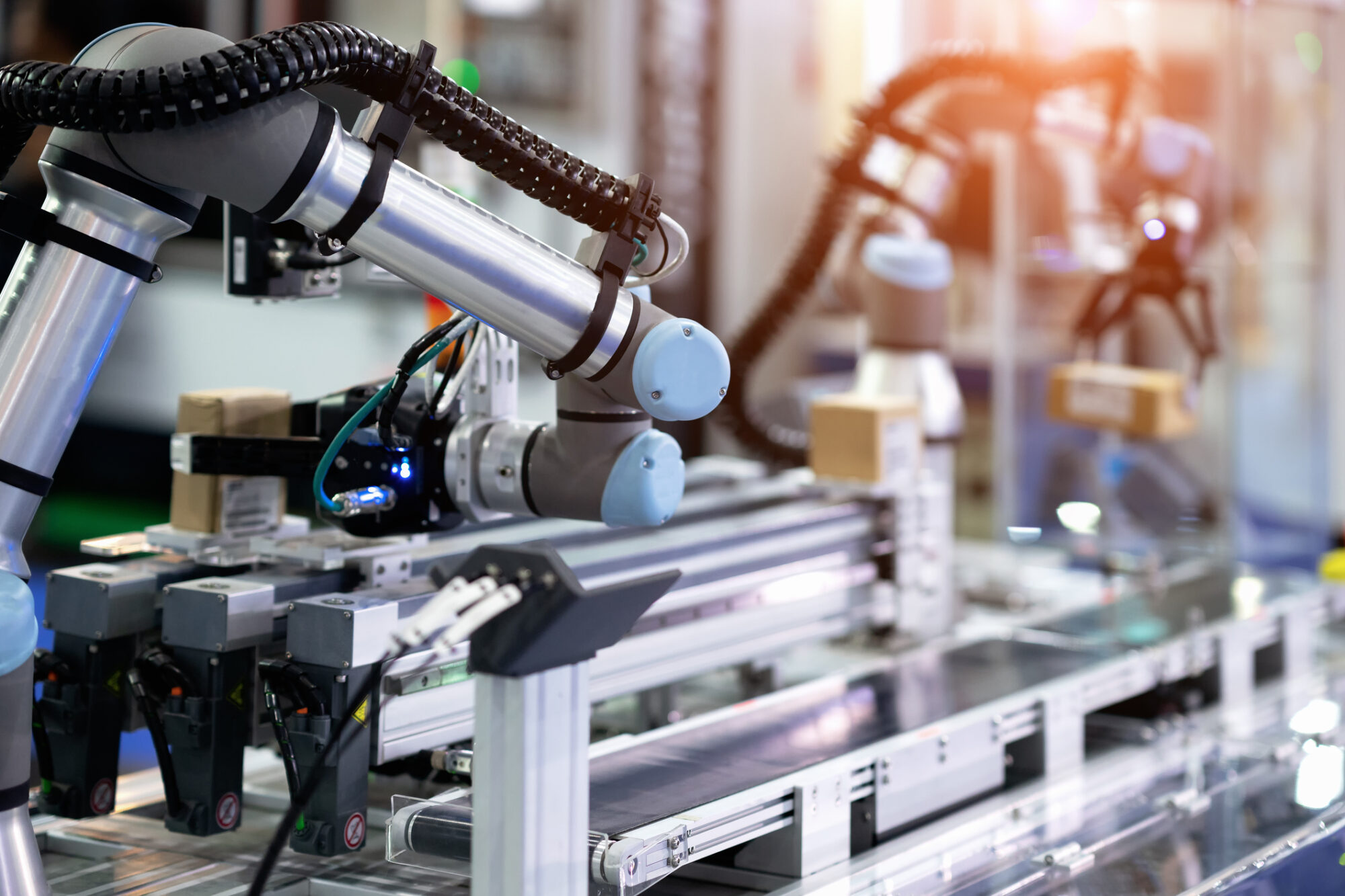
Flashback to 2015: “Hamilton” debuted on Broadway, millennials surpassed baby boomers as the largest U.S. generation and the term “Industry 4.0” was gaining traction in manufacturing circles. It was also when the Manufacturing Leadership Council created a conceptual framework called “Manufacturing 4.0.”
So what is the difference between Industry 4.0 and Manufacturing 4.0? While the terms may not sound all that distinct from each other, Manufacturing 4.0 represents the MLC’s commitment to a far-sighted, holistic approach to manufacturing’s tech-enabled metamorphosis—one that has served it well in over the past eight years.
The background: The 4.0 movement started in Germany in 2011 when the German ministries for education, research, economic affairs and energy developed a strategic initiative that would push forward the digital transformation of industrial manufacturing.
- They named this initiative Industrie 4.0. It featured an action plan that combined policy initiatives, public–private funding, strategies for technology implementation and the identification of business drivers and barriers.
The difference: For the MLC and its members, Manufacturing 4.0 is made up of transformations in three different arenas: technology, organization and leadership.
- Contrast this with Industry 4.0, which covers only technology topics—specifically nine pillars of technological innovation, which include autonomous robots, big data, cloud computing, IoT, cybersecurity, systems integration, simulation, AR/VR and additive manufacturing.
- “MLC, of course, covers all of these technologies, but, importantly, adds the dimensions of organizational and leadership change as part of its perspective on manufacturing’s digital transformation,” says David R. Brousell, the MLC’s founder, vice president and executive director.
MLC in action: While the MLC does provide member resources that focus on specific technologies and their uses in manufacturing operations, it also covers topics such as how leaders can prepare their workforce for digital transformation, how organizations should be structured to make business decisions based on manufacturing data and how leaders can ensure they set their teams up for digital success.
- Additionally, the annual Manufacturing Leadership Awards recognize not only high-performing digital manufacturing projects but also outstanding individuals who demonstrate both technological understanding and strong personal leadership.
M4.0’s continued evolution: Today, the MLC continues to use Manufacturing 4.0 as the overarching framework for its member companies’ activities.
- Its influence is apparent in the MLC’s annual Critical Issues Agenda, a member-created list of key business drivers and enablers of digital manufacturing.
- The agenda covers technological advances like smart factories and data analytics, alongside the organizational ecosystems that put such advances into operation—from the leaders who direct them to the cultures that make them succeed.
The Future of M4.0: As the MLC gets ready to set its 2023–2024 Critical Issues Agenda, it will continue to take a holistic approach to the technological changes sweeping the industry by recognizing the importance of people in making those transformations happen.
Go deeper: You can learn more about Manufacturing 4.0 by downloading the MLC’s white paper, Manufacturing in 2030: The Next Phase of Digital Evolution; reading a recent report, The Future of Industrial AI in Manufacturing; or attending its Aug. 30 virtual Executive Interview, Shifting from Disruption to Growth.
A Homegrown Solution: Schweitzer Engineering Laboratories Makes Printed Circuit Boards
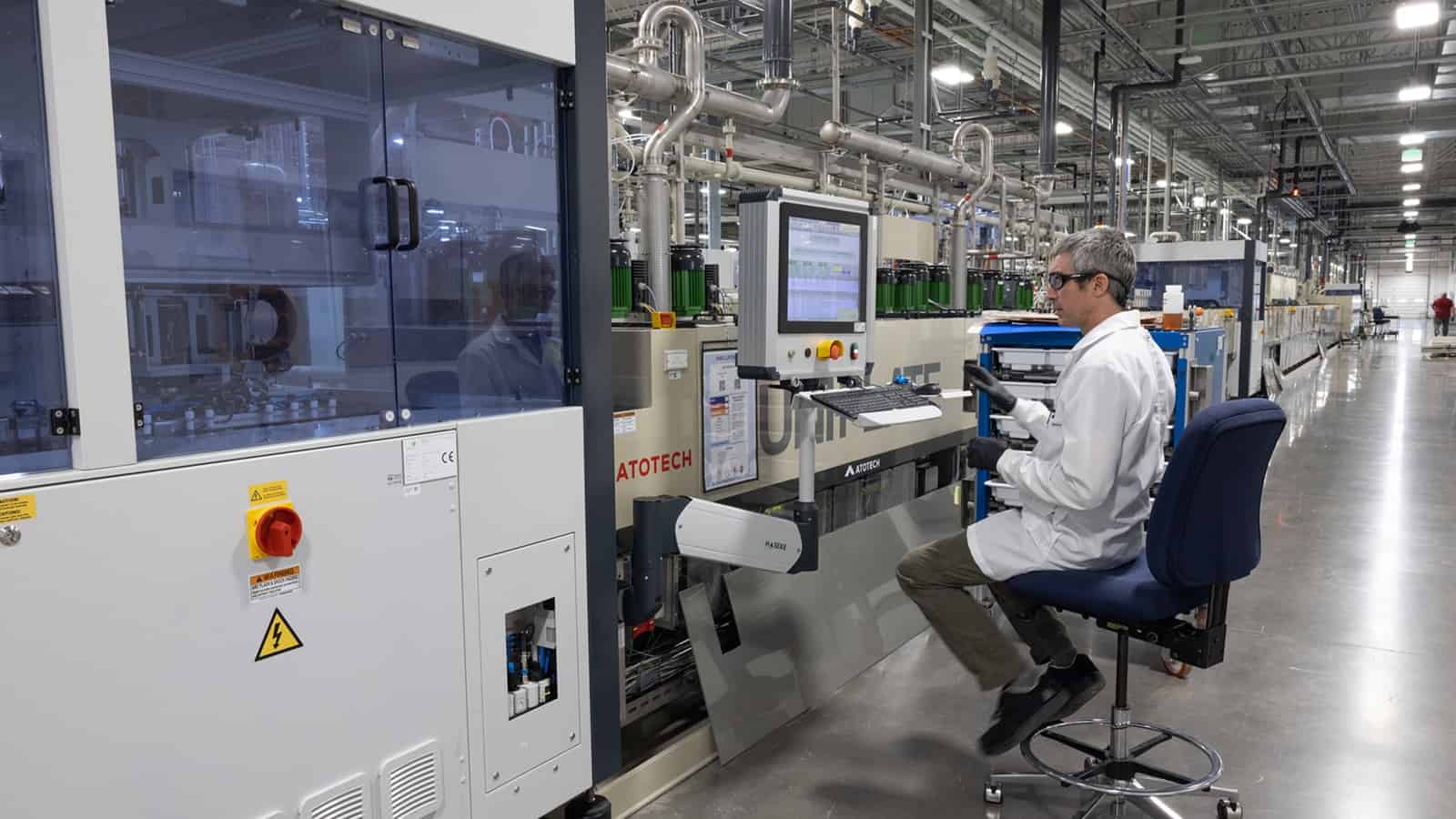
With one of its key components—printed circuit boards—in short supply, Schweitzer Engineering Laboratories chose the proactive solution: it would begin making them itself. Now that its new factory is up and running, SEL is receiving unexpectedly keen interest from other companies, and considering ramping up production for outside sales.
Fixing a supply chain problem: The Pullman, Washington–based electric power system protection solution manufacturer began manufacturing PCBs at its new $100 million, 162,000-square-foot factory in Moscow, Idaho, back in March.
- “Printed circuit boards take electronic components and interconnect them so they can interact with each other,” SEL CEO David Whitehead said. “Without them, you can forget about AI, forget about your cell phones—they’re in just about any electronic device.”
- The Moscow factory is running at about 25% capacity. When it reaches full production later this year, it will be one of the top PCB manufacturers in the U.S., according to Whitehead.
Domestic and accessible: The PCB “is a critical component that goes into our devices,” Whitehead continued. “Now, instead of sourcing PCBs from around the U.S., we can produce them ourselves.”
- The Moscow facility—which only produces the circuit boards for SEL—has increased the company’s supply chain resiliency and sped up its output, Whitehead told us. “Now, in a handful of days after designing a printed circuit board for a product, our engineers are in their labs testing it. It’s a big win for us.”
- Nearly half of manufacturers in the U.S.—44.9%—cite supply chain hurdles as one of their top business challenges, according to the NAM’s Q2 2023 Manufacturers’ Outlook Survey.
Self-funded and viable: SEL funded 100% of the facility’s construction costs, and it will have paid for itself in two to three years, Whitehead said.
- “I think that’s really a big deal for not only taxpayers but the local community generally,” he said. State and local governments “can take the funds [they didn’t use on us] and invest” elsewhere.
A good neighbor: The Moscow plant—which features a fume scrubber system that exceeds Environmental Protection Agency standards for volatile organic compounds—also uses a “zero-liquid discharge water treatment system that recycles and reuses all the water used to manufacture the printed circuit boards,” Whitehead said.
- A comparable factory would use about 90,000 gallons of water each day of production, while SEL uses about 500 to 600 gallons—the equivalent of only a few households’ daily usage, according to Whitehead. Most of that is for worker needs (drinking water and restrooms).
- The company also reclaims and reuses metals, such as tin, silver and gold, that are used in the production process.
- “We are very environmentally conscious about how we produce these boards,” Whitehead said.
What’s next? Since the facility began production, SEL has gotten numerous inquiries from other manufacturers interested in buying the PCBs. The company is likely to oblige them soon.
- “This is our next opportunity,” Whitehead said of producing boards for other manufacturers. “We love being vertically integrated, building as much as we can close to where we’re going to use the products. … As we get better at it for our own consumption, I can see us expanding it.”
Wisconsin Manufacturers & Commerce Honored with 2023 Leadership Award from Conference of State Manufacturers Associations
Bluffton, S.C. – Today, the Wisconsin Manufacturers & Commerce was honored with the 2023 Leadership Award from the Conference of State Manufacturers Associations, whose members also serve as the National Association of Manufacturers’ official state partners and drive manufacturers’ priorities on state issues, mobilize local communities and help move federal policy from the ground up in all 50 states and Puerto Rico. WMC was recognized for their work to attract and maintain the manufacturing workforce.
“We congratulate Kurt Bauer and the entire team at WMC for their incredible work this year to not only educate the next generation of manufacturing workers in Wisconsin, but also engage the business community at large to help spur investment in the state,” said Utah Manufacturers Association President and CEO, NAM board member and COSMA Chair Todd Bingham. “Their work shows the impact that we can all have to help make the United States the top destination in the world for manufacturing investment.”
The Leadership Award recognizes the achievement of a state manufacturing association that has developed impactful initiatives to support manufacturers and strengthen manufacturing in their state. Some of the initiatives that set WMC apart were their Coolest Thing Made in Wisconsin and Business World, which teach young people about entrepreneurship and free enterprise and promote manufacturing job opportunities in the state. Additionally, as part of WMC’s official mission to make Wisconsin the best place for business, the Future Wisconsin Project brings together diverse interest groups to identify and address the state’s long-term economic challenges and opportunities, including solutions to workforce challenges.
“The work of WMC to inspire the workforce of the future is a prime example of what’s needed to address the critical challenges that our sector faces today,” said NAM President and CEO Jay Timmons. “Under Kurt Bauer’s leadership, the WMC is advancing the solutions needed to make manufacturers more competitive and ensure manufacturing remains a key driver of Wisconsin’s economy.
-NAM-
The National Association of Manufacturers is the largest manufacturing association in the United States, representing small and large manufacturers in every industrial sector and in all 50 states. Manufacturing employs nearly 13 million men and women, contributes $2.91 trillion to the U.S. economy annually and accounts for 55% of private-sector research and development. The NAM is the powerful voice of the manufacturing community and the leading advocate for a policy agenda that helps manufacturers compete in the global economy and create jobs across the United States. For more information about the NAM or to follow us on Twitter and Facebook, please visit www.nam.org.
Workforce Retention Begins with Culture at Ketchie
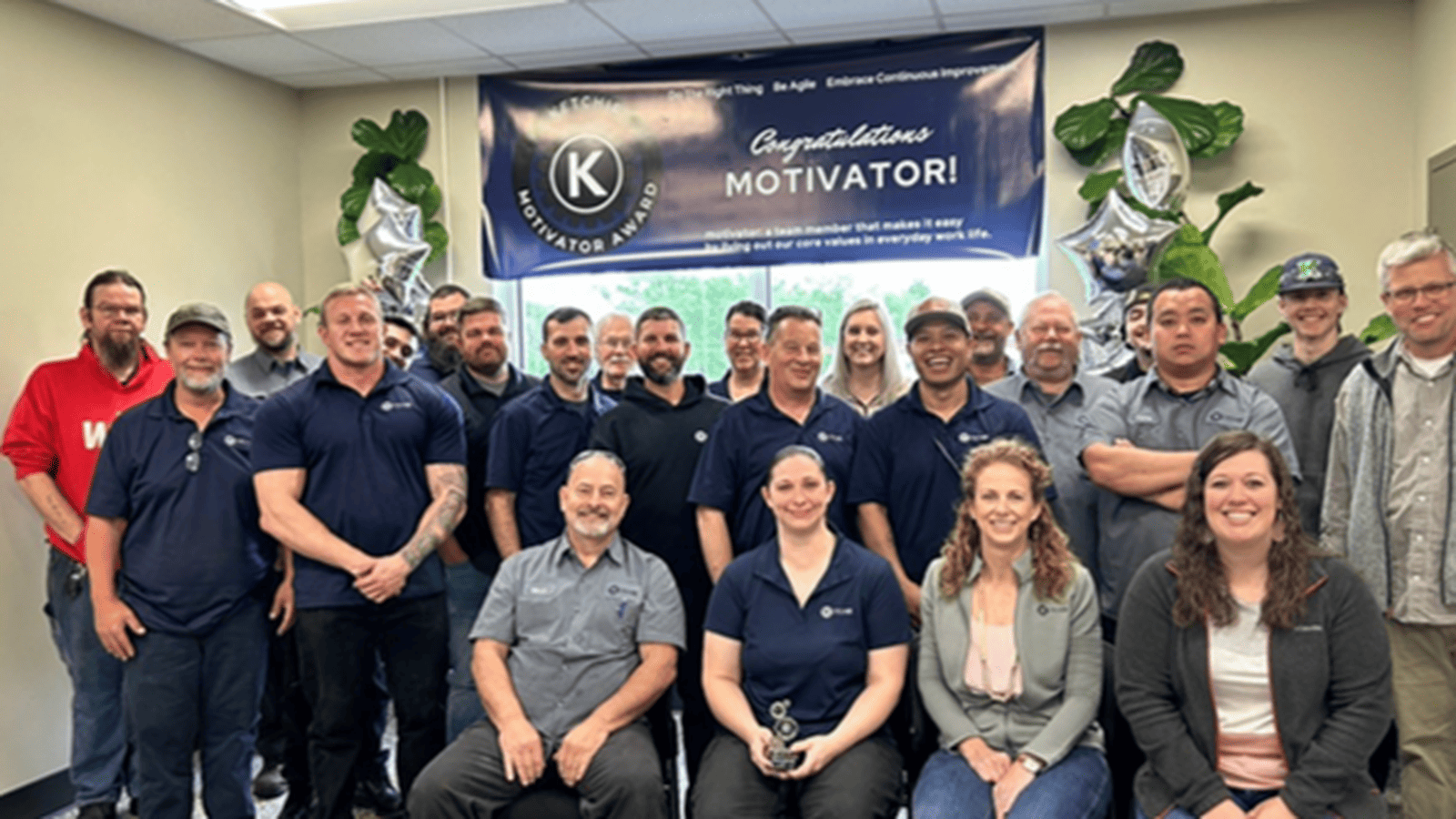
For Ketchie President and Owner Courtney Silver, retention all starts with culture. “I’m really happy to be here” is a phrase she hears often on her shop floor—and it tells her that the work culture at her company is in good shape.
- “A culture of empowerment that’s built on trust really fuels our team I think,” said Silver, who is the chair of the NAM’s Small and Medium Manufacturers Group. “They find so much dignity and purpose in fulfilling our mission here at Ketchie.”
Maintaining a high-performing, motivated and engaged workforce is a top priority for the third-generation precision machine shop in Concord, North Carolina, and Silver has implemented a number of strategies to keep it that way.
Team recognition: Every Wednesday, during Ketchie’s shift meeting, employees have the opportunity to recognize their team members for any achievement, big or small.
- “Recognition can be about anything,” says Silver. “It can be ‘Fred over there was able to cut five minutes of cycle time off this particular part because he changed the process’ or ‘Mary saved us money by switching out some tooling.’ We then post the feedback in the break room and email it out to the entire organization.”
- “There are so many things that can go wrong in manufacturing just trying to get a part out the door, and this is an opportunity to think about all the amazing things we’re doing,” she explained.
Silver also posts worker productivity charts every week. If workers meet their productivity goals and their indirect time goals, they get performance points, which are redeemable for gift cards.
- “I think people want to know if they’re on a winning team,” Silver said. “If you’re winning, it feels good. We’re all on the bus going in the same direction.”
Motivator Award: Each year, employees can also nominate a peer for the “Motivator Award,” which goes to the employee who best exemplifies Ketchie’s core values: to do the right thing, be agile and embrace continuous improvement.
- To honor the winner, Silver puts together a tribute video of team members sharing their thoughts about the employee and hosts a company brunch in celebration (to which the employee’s family is invited).
- “The winner also receives their own special parking spot, an extra day of vacation and a $1,000 gift certificate to the Marriott to take vacation with their family,” says Silver.
- “The team member that won the award last year had tears in his eyes, so I know that it’s been really impactful,” she continued.
Community service: Ketchie’s employees are passionate about giving back to the community. Through service projects, Ketchie supports the Boys & Girls Clubs of America as well as Cooperative Christian Ministry, which offers programs that relieve hunger and food insecurity and address homelessness and housing costs.
Opportunity Knocks: Silver isn’t only working to retain and support current employees, but also to train and mold the young people who will be tomorrow’s machinists.
- This year, Silver started an internship program for high school students named Opportunity Knocks. It allows students to shadow experienced machinists in factory environments while earning school credit.
- The interns go through a curriculum created by Edgerton Gear, Inc., called Craftsman with Character, a 16-week course that helps students explore the role of character in a professional trades environment. Silver said the course, which includes leadership and manufacturing-focused exercises, is taught at Ketchie four days a week in two-hour sessions. Three days of the week are job shadowing machinists on the shop floor, and one day is in a classroom setting at the shop discussing character traits and soft skills. The conversations lean on discovering what’s important in life and what might make them happy.
- “They absolutely love these high schoolers,” said Silver about the two mentors at Ketchie, who each have more than 30 years’ experience. “It gives them an opportunity to share their entire work career: what they’re doing, experiences learned along the way. It’s been neat to see.”
Investing in technology: Silver knows her team wants to work for a company that’s growing and investing in technology. She recently purchased a machine-tending collaborative robot, which takes over machinists’ “least favorite” part of the job—changing parts while the machines run.
- “I interviewed somebody recently who said to me in the interview, ‘It’s really good to see that you want to grow and that you’re making these big investments,’” said Silver. “You’re buying new technology that excites them. They want to be part of that mission and growth.”
The last word: Silver shared some advice for companies that might be struggling with workforce retention.
- “Use employee surveys, focus groups or roundtable discussions to see what you need to do or should do. Everyone wants to be heard. It’s important to listen.”
The NAM’s workforce development and education affiliate, the Manufacturing Institute, has many initiatives to help employers retain and develop their teams. For a deeper dive, check out this study by the MI on improving retention and employee engagement. The MI will also explore retention challenges and solutions at its Workforce Summit in Atlanta on Oct. 16–18. Click here for more information.
NAM and Make UK Sign MOU to Strengthen Economic Stability and Security Across the Atlantic
Associations Call for Expanded Bilateral Trade and Economic Relationship
Washington, D.C. – Today, the National Association of Manufacturers and Make UK hosted a meeting at NAM headquarters where they formalized manufacturers’ commitment to supporting close economic ties between the United States and United Kingdom. Make UK CEO Stephen Phipson and NAM President and CEO Jay Timmons signed an updated memorandum of understanding, which will serve as a roadmap to the cooperation between the two organizations and outlines the key goals and objectives for the partnership.
“The NAM and Make UK have such a strong, special relationship, just as the U.S. and the UK do, and we must continue to deepen that partnership and the commercial and economic ties between our countries,” said Timmons. “Cooperation between American and British companies not only makes our economies stronger, but also strengthens the transatlantic strategic alliances to support the rule of law, freedom and opportunity from those who threaten our shared values. Especially with Russia’s continued assault on Ukraine, it is critical that we unleash the power of commerce to preserve, protect and expand democracy.”
The MOU calls for Make UK and the NAM to work together to provide opportunities for their members to strengthen manufacturing through a number of avenues, including exploring potential trade delegations, trade fairs and business networks; facilitating visits and economic delegations between representatives of the two organizations for promoting trade, investment and commercial exchanges among member companies and organizations; and working together on joint meetings, conferences, seminars, reports, letters and mutually agreed advocacy on trade and investment-related issues.
“Make UK is delighted to have further strengthened our partnership agreement with our American counterpart, the National Association of Manufacturers, as we focus increasingly on boosting cross-Atlantic trade,” said Phipson. “In recent months, we have agreed to a process of even broader sharing of market intelligence, data and policy work, facilitating visits for economic delegations to visit on both sides of the Atlantic to unlock new trading opportunities.
“We will continue to work ever more closely as we look to cement commercial exchanges and opportunities for shared promotion as we build on the ties that have connected our two nations for generations. Relations with the U.S. are vital, and its market is the second-most important for UK goods. In a post-Brexit world, it is likely to assume ever greater importance as part of our efforts to boost global trade.”
Click here to view the full text of the MOU.
-NAM-
The National Association of Manufacturers is the largest manufacturing association in the United States, representing small and large manufacturers in every industrial sector and in all 50 states. Manufacturing employs nearly 13 million men and women, contributes $2.90 trillion to the U.S. economy annually and accounts for 55% of private-sector research and development. The NAM is the powerful voice of the manufacturing community and the leading advocate for a policy agenda that helps manufacturers compete in the global economy and create jobs across the United States. For more information about the NAM or to follow us on Twitter and Facebook, please visit www.nam.org.
Announcing the 2023 Manufacturing Leadership Award Finalists!

The Manufacturing Leadership Council—the NAM’s digital transformation division—has announced the finalists for the 2023 Manufacturing Leadership Awards, the industry’s premier awards program for achievements in digital manufacturing. You can read the complete list of finalists here.
The ceremony: The finalists will be honored at the Manufacturing Leadership Awards Gala in Marco Island, Florida, on June 28.
- Also announced at the gala will be winners for all project and individual categories, winners of the Manufacturing in 2030 Award, the Manufacturing Leader of the Year, the Small/Medium Enterprise Manufacturer of the Year and the Large Enterprise Manufacturer of the Year.
Rethink: Certain award winners will also present at Rethink, the industry’s leading event for exploring manufacturing’s digital era, which will also take place in Marco Island on June 26–28.
The categories: The awards are divided into nine project categories to recognize company achievements:
- Artificial Intelligence and Machine Learning
- Collaborative Ecosystems
- Digital Network Connectivity
- Digital Supply Chains
- Engineering and Production Technology
- Enterprise Technology Integration
- Operational Excellence
- Sustainability and the Circular Economy
- Transformational Business Cultures
Additionally, individual leaders are recognized in the Digital Transformation Leadership and Next-Generation Leadership categories.
The last word: “As more manufacturers extend digital’s reach onto the factory floor and throughout their operations, we are witnessing transformative performance improvements that would have been unthinkable just a few short years ago—and that are improving life for employees and customers alike,” said MLC Co-Founder, Vice President and Executive Director David R. Brousell.
Manufacturers Add Industry Expert Amid Fight for Permitting and Regulatory Reform
Washington, D.C. – The National Association of Manufacturers has announced Brandon Farris as its new vice president of energy and resources policy.
“Brandon joins the NAM at a pivotal time in our country and for our industry,” said NAM President and CEO Jay Timmons. “Manufacturers across the United States face regulatory challenges that affect their ability to do what they do best: transform and deploy modern technologies to protect the environment, while creating jobs and strengthening the economy. Commonsense regulatory and permitting reform, along with energy security, are needed now more than ever. Brandon’s experience and expertise will help manufacturers accomplish these critical goals.”
Before joining the NAM, Farris was the head of federal government relations for The Chemours Company, where he played an integral role in securing passage of the AIM Act, designed to phase out refrigerants that contribute to climate change. He worked closely with the NAM to help secure bipartisan ratification of the Kigali Amendment to the Montreal Protocol during the 117th Congress. Along with these and other major legislative accomplishments, he was honored as a 2022 top lobbyist by the National Institute for Lobbying & Ethics.
Previously, Farris served as assistant general counsel for Arkema as well as senior counsel for government relations for the Saudi Basic Industries Corporation. After serving in the Marine Corps Reserve, he began his career in Washington as a Bryce Harlow Foundation Fellow at the George Washington University School of Law while working on the U.S. House Agriculture Committee.
-NAM-
The National Association of Manufacturers is the largest manufacturing association in the United States, representing small and large manufacturers in every industrial sector and in all 50 states. Manufacturing employs nearly 13 million men and women, contributes $2.81 trillion to the U.S. economy annually and accounts for 55% of private-sector research and development. The NAM is the powerful voice of the manufacturing community and the leading advocate for a policy agenda that helps manufacturers compete in the global economy and create jobs across the United States. For more information about the NAM or to follow us on Twitter and Facebook, please visit www.nam.org.
